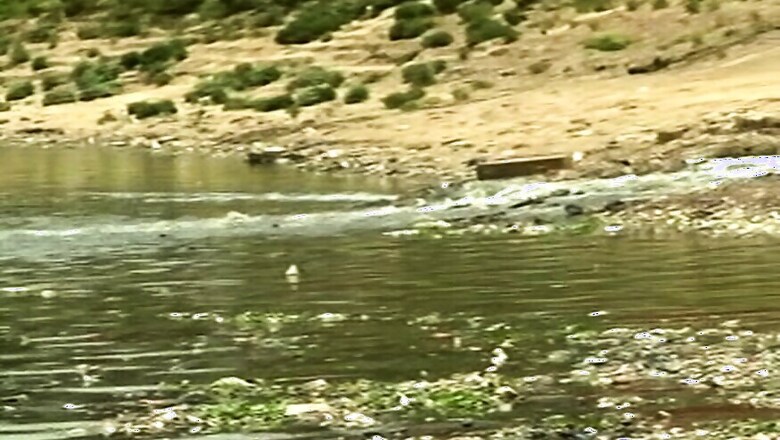
views
Varanasi: Two years ago, Prime Minister Narendra Modi led a Swachch Bharat campaign at Assi Ghat in Varanasi and the change is visible on the ground. The silt has been removed and it is probably the cleanest ghat in Varanasi.
Workers from Sulabh International clean the ghat five times a day.
But things are very different half a kilometer away. At Ravi Das Ghat there are tonnes of garbage and sanitation workers struggle to take out big plastic bags from the river. The equipment they use doesn't seem to be effective either.
"Can you see the drain? Even 20 trucks will not be able to take out the garbage that comes out of it," says Prem Kumar, a sanitation worker.
The Centre has also deployed a machine called trash skimmer. The person who operates it says he collects five tonnes of garbage every hour. The sanitation workers add that there are only cosmetic changes and the problem is much deeper.
"Not just one drain, you will have to close drains in all states to control pollution. Ganga flows through so many places," points out Jagannath, another sanitation worker.
There are at least 1,000 factories in and around Varanasi which discharge harmful chemicals into sewage lines. According to professor BD Tripathi, who heads the Ganga Research Centre at Banaras Hindu University, the waste generated is at least three times the capacity of the three sewage treatment plants in the city.
"Ganga is passing through five states. Each and every state has its own rules and regulations and because of lack of coordination we are failing in our mission," Tripathi adds.
Burning of human bodies at the ghats is another major source of pollution. This is a religious practice that has been going on for centuries.
While there have been efforts to clean the Assi Ghat and Dashashwamedh Ghat, there are many others which still need work. Unless the government controls the flow of factory waste, garbage and human remains, cleaning of ghats will only see a cosmetic change.

















Comments
0 comment